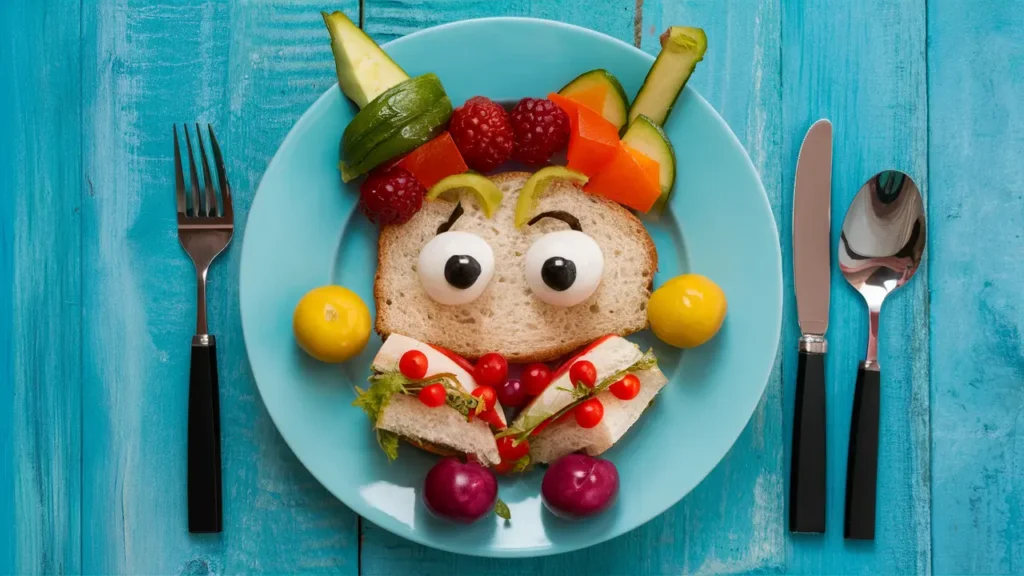Deciding what to make a toddler for dinner can feel like navigating a tiny minefield on a daily basis. From battling picky eaters to ensuring a nutritionally balanced diet, parents and caregivers constantly seek fresh ideas to keep mealtime both enjoyable and wholesome. In this comprehensive guide, we’ll delve into easy, nutritious recipes, essential nutrients, and smart strategies to appeal to young palates. Whether you’re in a rush or looking to introduce new flavors, this article promises a treasure trove of dinner solutions tailored for little ones.
Part 1: Introduction
What to Make a Toddler for Dinner: Navigating Mealtime with Ease
Mealtime with toddlers doesn’t have to be a stressful affair. With the right approach, it can turn into an enjoyable journey that both nurtures and delights your little ones. This section will lay the groundwork for understanding the fundamental nutritional needs of toddlers and the importance of creating balanced meals that cater to their growth and energy requirements.
Introduction to Toddler Nutrition Needs
Toddlers are little bundles of energy, constantly on the move and exploring the world. As such, their bodies demand a variety of nutrients to support this rapid phase of growth and development. A balanced diet for a toddler typically includes a mix of fruits, vegetables, grains, protein sources, and dairy. Ensuring they receive adequate iron, calcium, and vitamins through diverse food sources is crucial for their overall health.
Navigating the toddler food terrain requires a blend of patience and creativity. It’s not just about what they eat, but how they eat that can turn mealtime into a joy rather than a chore. Engaging toddlers in the meal process and offering visually appealing foods can make a significant difference in their eating habits.
Importance of Balanced Meals for Toddlers
Creating a balanced plate for dinner is akin to painting a masterpiece—except this one can help sculpt your toddler’s long-term eating habits and health. Every meal should aim to be a harmonious blend of carbohydrates, proteins, and fats, alongside essential vitamins and minerals. These nutrients play pivotal roles, from powering muscles for play to fostering brain development for those precious learning moments.
Moreover, introducing a variety of foods at an early age can help reduce the likelihood of pickiness later on. It’s all about exposure and presentation; a colorful mix of vegetables, a range of proteins from beans to fish, and whole grains can be both appealing and nutritious. Remember, a toddler’s stomach is small, so serving small, frequent meals with plenty of nutrients is the way to go.
By focusing on these foundational aspects, you set the stage for a diet that supports a toddler’s health, growth, and energy levels, making dinner time a smooth sail rather than a turbulent sea. Next, we’ll explore how to plan a weekly menu that keeps things fresh, exciting, and wholesome, so stay tuned!
Part 2: Planning Your Toddler’s Dinner
Essential Nutrients for Toddlers
When it comes to toddlers, every bite counts. Ensuring that each meal is packed with essential nutrients is crucial for their physical and cognitive development. Understanding which nutrients are non-negotiable can help you craft meals that not only satisfy their tiny taste buds but also contribute to their health.
Key Nutrients and Their Sources
A well-rounded diet for toddlers should include a variety of key nutrients:
- Protein: Vital for growth and repair of tissues. Sources include lean meats, poultry, fish, eggs, dairy products, beans, and nuts.
- Calcium: Essential for strong bones and teeth. Found in dairy products like milk, cheese, and yogurt, as well as in fortified plant milks and green leafy vegetables.
- Iron: Crucial for cognitive development and energy levels. Rich sources include red meat, poultry, fish, lentils, and fortified cereals.
- Vitamins A, C, and D: Important for immune function, skin health, and bone growth. Available in fruits and vegetables like carrots and oranges, and in fortified foods.
Integrating a diverse range of these nutrients into daily meals ensures that your toddler receives the building blocks for healthy development.
Balancing Macronutrients in Toddler Meals
Balancing macronutrients — proteins, fats, and carbohydrates — is just as important as including a variety of micronutrients. Carbohydrates provide the necessary energy toddlers need to play and explore, while fats are crucial for brain development and energy storage. Including a balanced mix in each meal supports overall growth and helps maintain steady energy levels throughout the day.
How to Plan a Weekly Dinner Menu for Your Toddler
Planning a weekly menu can be a game-changer in managing hectic schedules while ensuring your toddler enjoys a variety of nutritious meals. Here’s how to do it effectively:
Step-by-Step Guide to Meal Planning
- Assess Your Weekly Schedule: Identify busier days when you’ll need quicker meals and days when you might have more time to prepare something special.
- Draft a Meal Framework: Create a basic structure for meals throughout the week, ensuring each meal includes protein, a carbohydrate, and fruits or vegetables.
- Prepare in Advance: Use your free time to prep parts of meals ahead of time—chopping veggies, cooking grains, or making batches of protein that can be quickly assembled during the week.
- Incorporate Leftovers: Plan for meals that can easily transform into something new the next day to reduce waste and save time.
Tips for Quick and Healthy Meals
- Batch Cooking: Prepare large quantities of staples like rice, pasta, or chicken to use throughout the week.
- Use Frozen Vegetables: These can be a great time-saver and are just as nutritious as their fresh counterparts.
- One-Dish Meals: Dishes like casseroles or stir-fries can include all the necessary food groups and make cleanup a breeze.
By planning ahead and using these strategies, you can eliminate the daily stress of deciding what to make for dinner, allowing more time for what really matters—spending quality time with your toddler. Next, we’ll dive into specific, toddler-approved recipes that are both quick to whip up and packed with nutrition.
Part 3: Easy and Nutritious Dinner Ideas
Crafting quick, healthy dinners that appeal to toddlers doesn’t have to be a daunting task. In this section, we’ll explore a range of toddler-friendly recipes that are both nutritious and easy to prepare, ensuring your little one looks forward to mealtime every day.
Quick and Healthy Toddler Dinner Recipes
Time is often of the essence when it comes to preparing meals for toddlers. Here are some ideas that can be whipped up in about 15 minutes, offering both nutrition and taste without the long wait.

15-Minute Toddler Dinners
- Mini Turkey and Vegetable Meatballs: Mix ground turkey with grated zucchini, carrots, and a bit of bread crumbs. Form into small balls and cook in a skillet until browned and cooked through. Serve with a side of mashed sweet potato.
- Quick Veggie Stir-fry: Sauté a mix of colorful vegetables such as bell peppers, broccoli, and snap peas in a bit of olive oil. Add some tofu or cooked chicken for protein and serve over pre-cooked rice.
- Egg and Avocado Toast: Scramble eggs lightly and serve on whole-grain toast with slices of avocado on top. It’s simple, nutritious, and usually a hit with the toddler crowd.
One-Pot Meals for Easy Cleanup
- Chicken and Veggie One-Pot Pasta: Cook pieces of chicken breast and a medley of vegetables like spinach, tomatoes, and bell peppers with pasta in a single pot with some chicken broth and herbs. It’s a wholesome meal that requires minimal cleanup.
- Lentil Sloppy Joes: Cook lentils with onion, garlic, carrot, and celery in a tomato-based sauce. Serve the mixture on whole-wheat buns for a fun and messy meal most toddlers love.
Toddler-Friendly World Cuisine
Introducing toddlers to flavors from around the world is a great way to expand their palates and make dinner exciting. Here are a few recipes that are easy on the spices but big on flavor.
Introducing Global Flavors to Toddlers
- Mild Chicken Curry: Use mild curry powder to cook chicken pieces and vegetables like carrots and peas in coconut milk. Serve it over a small portion of rice for a gentle introduction to Indian flavors.
- Italian Polenta and Veggie Bake: Layer cooked polenta with marinara sauce, mozzarella cheese, and chopped vegetables, and bake until bubbly. It’s a comforting dish with familiar flavors presented in a new way.
Easy Recipes from Around the World
- Japanese Miso Soup with Tofu and Seaweed: This mild soup is warm and comforting, offering a good source of protein and minerals from tofu and seaweed, and it’s gentle on little tummies.
- Greek Yogurt Parfaits: Layer Greek yogurt with fruit and a sprinkle of granola for a dessert or a rich snack. It’s a tasty way to introduce new textures and flavors.
These meal ideas not only provide essential nutrients required for toddlers but also ensure that dinner remains a time of discovery and enjoyment. Coming up next, we’ll tackle strategies to deal with picky eaters, ensuring that these nutritious dishes get the thumbs up from even the fussiest of toddlers.
Part 4: Dealing with Picky Eaters
Handling picky eaters can often feel like a full-time negotiation job, but with the right strategies, mealtime can turn from a battle of wills into an opportunity for exploration and enjoyment. Here are some practical tips and creative methods to help your toddler embrace a wider variety of foods.

Understanding Picky Eating Behaviors
Picky eating is a normal stage for many toddlers as they develop their tastes and preferences. However, there are effective ways to encourage them to eat a broader range of foods without turning mealtime into a stressful event.
Creative Food Presentation Strategies
Presentation can make a world of difference in how toddlers perceive their meals. Here are some creative ideas to make food more appealing:
- Fun Shapes and Sizes: Use cookie cutters to create fun shapes out of sandwiches, pancakes, or even slices of fruit and vegetables. A plate full of little stars and hearts can be more enticing than plain pieces.
- Colorful Plates: Incorporate a variety of colors through different fruits and vegetables. The more vibrant the plate, the more likely a toddler is to be intrigued by it.
- Interactive Meals: Allow toddlers to build their own dishes. For example, a taco night where they can add their own toppings can make them more excited about eating.
Engaging Toddlers in the Cooking Process
Getting Toddlers Involved in Cooking
Involving toddlers in the cooking process can significantly increase their interest in the food. Here are a few ways to involve them safely:
- Simple Tasks: Let toddlers help with safe tasks like washing vegetables, stirring batter, or sprinkling cheese. Even these small tasks can make them feel involved and proud of their contribution.
- Grow Your Own Ingredients: If space allows, start a small garden where toddlers can help grow some simple herbs or vegetables. The excitement of seeing their plants grow can encourage them to taste their harvest.
By incorporating these methods, mealtime can become more than just a routine—it can be an adventure that excites and educates. By making mealtime fun and engaging, you’ll not only broaden their dietary choices but also instill a positive attitude towards eating. These strategies underscore the importance of patience and creativity in fostering a healthy relationship with food among toddlers. Up next, we’ll explore some common questions parents have about feeding toddlers to provide further clarity and support.
Part 5: FAQs
Feeding toddlers often comes with a host of questions as parents navigate the complexities of diet, preferences, and nutritional needs. Here, we’ll address some of the most common concerns that parents have about toddler meals, providing expert insights to ensure healthy, happy mealtimes.
Quick Dinner Solutions for Busy Evenings
What are some quick toddler dinner ideas?
Quick dinners are essential for busy families. Here are a few ideas that can be prepared in less than 20 minutes:
- Pea and Cream Cheese Pasta: Cook pasta and mix it with cream cheese and peas—a simple, creamy dish that’s usually a hit with kids.
- Turkey and Cheese Quesadillas: Use whole-wheat tortillas and fill them with turkey and cheese for a quick, nutritious option that’s also great for hands-on eating.
- Vegetable Omelette: Eggs are a fantastic source of protein and can be whipped up in minutes. Add some chopped vegetables for extra nutrition.
Ensuring Nutritional Adequacy
How can I ensure my toddler is getting enough nutrients?
Ensuring that toddlers get all the necessary nutrients involves offering a variety of foods from the five major food groups: fruits, vegetables, grains, protein foods, and dairy. Aim for color and variety, and try to include at least one food from each group at every meal.
Dealing with Dinner Time Refusals
What should I do if my toddler refuses to eat dinner?
It’s common for toddlers to go through phases of picky eating. Here’s what you can do:
- Stay calm and avoid power struggles. Offer the food without pressure and let your toddler choose how much to eat.
- Keep offering new foods. It can take several exposures before a child accepts a new food.
- Ensure a routine for meals and snacks. Consistency helps regulate appetite.
Foods to Avoid at Dinner
Are there any foods I should avoid giving my toddler at dinner?
Yes, there are certain foods to avoid:
- High choking risk foods: such as whole grapes, large pieces of meats, candy, and nuts.
- Excessive high-fiber foods: while fiber is important, too much can fill up a small stomach quickly before eating enough calories.
- Too much juice or sugary drinks: these can decrease appetite for other nutritious foods.
Making Mealtime Enjoyable and Stress-Free
How can I make dinner time less stressful for both my toddler and me?
- Create a positive mealtime atmosphere: Keep the environment calm and free from distractions like television.
- Stick to a routine: Serve meals and snacks at roughly the same times each day.
- Be a role model: Eat with your toddler as often as possible, showing them how you enjoy various foods.
By addressing these FAQs, we provide practical tips and reassurance to parents navigating the sometimes turbulent waters of toddler nutrition. Remember, each child is unique, and their eating habits will vary. The key is consistency, patience, and encouragement. Up next, we will conclude our guide with key takeaways that will help reinforce healthy eating habits for a lifetime.
